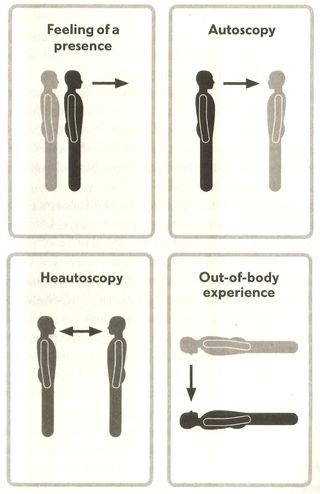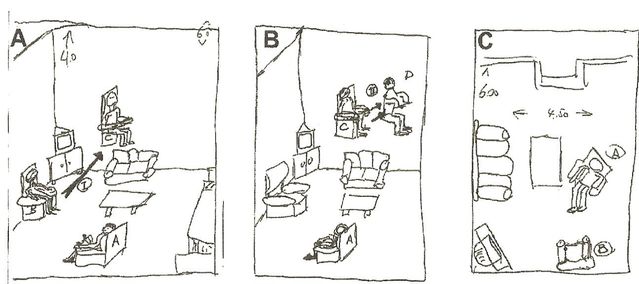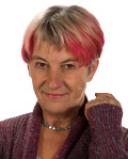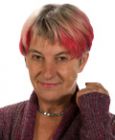Parapsychology
Out-of-Body Experiences: Bodily Illusions
Part 11. Doppelgangers, autoscopy and other strange illusions
Posted September 5, 2019
At last, out of body experiences (OBEs) are starting to make sense. They are disturbances – whether deliberate or accidental – of our body schema. This is the brain’s continuously updated model of our own body, closely related to the brain's temporoparietal junction (TPJ), which incorporates inputs from the thalamus, visual, auditory and other areas.
But this raises a new question. We know that disturbing the TPJ can produce an OBE but why specifically an OBE? Why doesn’t it produce all sorts of other distortions and illusions of the body schema? And if it does, what would they be like?
The answer is that it does. Disruption or damage to either temporal or parietal lobes leads to a whole range of strange bodily experiences. Simple ones can precede a full-blown OBE as happened to me when I felt unstable or later when I seemed to be changing size. Among the most common OBEs are sensations of floating, flying or sinking into the ground. Less commonly, people feel that they are rotating, or their limbs are being bent, shortened or stretched.
These effects depend on where the disturbance occurs. When the pioneering neurosurgeon, Wilder Penfield, induced an OBE in a woman with epilepsy back in the 1950s, she reported different effects depending on where he stimulated her brain. When Blanke induced an OBE, his patient experienced many odd distortions at low levels of stimulation and an OBE at higher levels (Blanke et al 2002).
We might be tempted to dismiss all these as just pathological oddities and nothing to do with "real" OBEs but before we do, we should look at some other related experiences to see how OBEs fit in. In the psychiatric literature, OBEs are counted as one of the four types of "full-body" or "whole-body illusions." The other three are autoscopy, heautoscopy and the sense of presence or the feeling of a presence (sometimes called FP or FoP). Understanding these may help us see how OBEs fit in.

Autoscopy is often confused with OBEs but should not be. The problem arises because "autoscopy" literally means "seeing oneself" and this experience is part of many OBEs. But when used in psychiatry, autoscopy refers to a pathological condition, more commonly known as the Doppelgänger. The difference between the experiences is simple: in an OBE, the experiencing self or centre of consciousness seems to be outside the physical body looking at the world from elsewhere; in autoscopy, it remains inside and a double is seen on the outside.
Long ago, the psychiatrist Macdonald Critchley (1950) defined autoscopy as "delusional dislocation of the body image into the visual sphere." More recently, Olaf Blanke and Shahar Arzy (2005) call it “the experience of seeing a double of oneself in extrapersonal space without leaving one’s body." They give a simple example of a patient who suddenly notices a seated figure on their left. “It wasn’t hard to realize that it was I myself who was sitting there. I looked younger and fresher than I do now. My double smiled at me in a friendly way" (from Kölmel 1985, case 6).
If it seems odd that people still confuse the terms today, perhaps this is because "autoscopy" is used in other ways too, as in "autoscopic hallucinations" or “autoscopic phenomena," and in OBE research the ability to see one’s own body is sometimes referred to as autoscopy since that is literally what the word means. Nevertheless, the difference has been well explained in much of the recent literature on OBEs (e.g. Blanke et al 2004, Brugger et al 1997, Lopez et al 2008).
Peter Brugger, a Swiss neuroscientist, points out some other intriguing differences. In autoscopy, the double appears as a mirror image and includes clothes, natural colours and other details such as wearing glasses. He cites a classic 1901 case of an old man who used to smoke his pipe leaning against the right side of his window and regularly saw a man identical to himself smoking a pipe in his other hand and leaning against the other side of the window (Brugger 2002, Brugger et al 1997). This is not, as far as I know, true of OBEs. In "somatic OBEs," when there is a full body double, this floating body is not a mirror image. For example, in my own OBE, I could reach out my right hand when seemingly flying and it did not appear on the left (Blackmore 2017).
Finally, scans of psychiatric patients who report OBEs and autoscopy show that these experiences relate to damage at different positions near the TPJ (Blanke et al 2004, Blanke and Metzinger 2009). Some of these patients also report floating, flying or rotating, and movements or shortening of their limbs. One man described a bizarre two-stage experience of rising up in his living room chair and then having a second duplicate body leave the floating chair. He could see this "second own body" from behind as it sat still. In rapid alternation, he heard and saw his wife from above and in front of him, as though he was still sitting in his chair on the ground. As well as feeling a sense of lightness and floating, he was elated and happy. If this is difficult to visualize, his own drawing makes the experience clear.

What does all this tell us about OBEs? I would say it’s yet another reason to reject supernatural explanations like astral projection. Anyone who wants to make claims about souls, spirits, astral bodies or other worlds will now have to explain these close relationships between OBEs and autoscopy – not just in terms of brain function, but the similarities in all the bodily distortions that go along with OBEs and autoscopy.
Of course, people may still claim that some OBEs are pathological illusions while others are "the real thing." In other words, there may be two types of OBE – the sort that mental patients have and the healthy sort. Things are not, however, so simple, as we shall see. But first, there are two other full-body illusions – the weird and rare experience of heautoscopy, and the far more common feeling of an invisible presence. I will turn to these in my next post.
References
Blackmore, S. 2017 Seeing Myself: The new science of out-of-body experiences, London, Robinson
Blanke, O., & Arzy, S. 2005. The out-of-body experience: disturbed self-processing at the temporo-parietal junction. The Neuroscientist, 11, 16-24.
Blanke, O., Landis, T., Spinelli, L., & Seeck, M. 2004. Out‐of‐body experience and autoscopy of neurological origin. Brain, 127:2, 243-258.
Blanke, O., & Metzinger, T. 2009. Full-body illusions and minimal phenomenal selfhood. Trends in cognitive sciences, 13:1, 7-13.
Blanke, O., & Mohr, C. 2005. Out-of-body experience, heautoscopy, and autoscopic hallucination of neurological origin: Implications for neurocognitive mechanisms of corporeal awareness and self-consciousness. Brain Research Reviews, 50(1), 184-199.
Blanke, O., Ortigue, S., Landis, T. and Seeck, M. 2002 Stimulating illusory own-body perceptions. Nature, 419:269-70
Brugger, P. 2002. Reflective mirrors: perspective-taking in autoscopic phenomena. Cognitive Neuropsychiatry, 7(3), 179-194.
Brugger, P., Regard, M., & Landis, T. 1997. Illusory reduplication of one's own body: phenomenology and classification of autoscopic phenomena. Cognitive Neuropsychiatry, 2(1), 19-38.
Critchley M 1950 The body image in neurology. Lancet 1:335-340
Kölmel HW. 1985. Complex visual hallucinations in the hemianopic field. J Neurol Neurosurg Psychiatry 48:29–38.
Lopez, C., Halje, P., & Blanke, O. 2008. Body ownership and embodiment: vestibular and multisensory mechanisms. Neurophysiologie Clinique/Clinical Neurophysiology, 38(3), 149-161.




